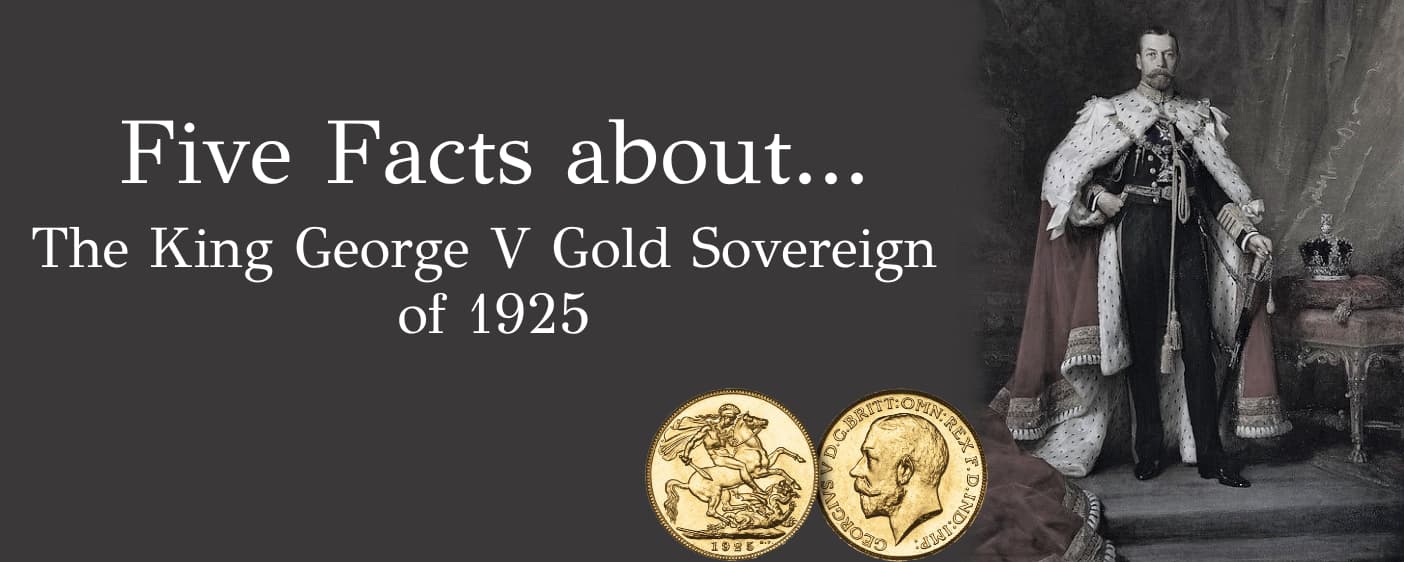
We’ve reached the fifth instalment of the five facts about the Twelve Greatest Sovereigns blog series, and this time, we’re taking a look at the King George V Gold Sovereign of 1925…
This sovereign was one of few minted in London
Although King George V reigned for twenty-five years until 1936, only five dates of half sovereign and eighth dates of sovereign were ever struck in London. This sovereign features the first portrait of King George V facing left, and shows the acclaimed St George slaying the dragon design by Benedetto Pistrucci on the reverse.
This is the last British currency sovereign
The start of the First World War effectively marked the end of gold coins in daily circulation. However, in 1925, Chancellor of the Exchequer Winston Churchill controversially put Britain back onto the Gold Standard. The Bank of England seized the opportunity to send a lot of worn and damaged gold coins that had accumulated in its vaults to The Royal Mint for melting down and re-minting into new coins. The 1925 gold sovereign was struck eight years after the last sovereign had been struck in 1917, and it would turn out to be the last ever British currency sovereign, ending a 108 year tradition of circulating gold.
This sovereign is known as the ‘Churchill sovereign’
The coins were never released into circulation: although Britain was back on the Gold Standard, it was deemed imprudent to issue gold as coinage. However, the 1925 sovereigns had been struck, known as the ‘Churchill’ sovereign, and lay in the vaults of the Bank of England. This sovereign has retained its link with Churchill and his passionate Parliamentary speech that led to its minting.
These coins were involved in the Second World War
It is possible these coins were given to those operating behind enemy lines in World War II as a form of emergency currency. After World War II, they were also re-struck in 1949, 1951 and 1952 as gold bullion markets placed sovereigns in considerable demand, in the hope that a supply of genuine coins would satisfy market demand and remove the premium that counterfeiters could earn.
They were minted under a king who was no longer alive
Being struck after the Second World War gave rise to a remarkable situation. The sovereigns of 1925 carried the portrait of King George V, who had died over a decade earlier. Incredibly, this meant they were minted under the authority of a king who was no longer alive.
The King George V 1925 gold sovereign is one of the twelve most important sovereigns as it is the last of its kind ever issued in London, and the story of its minting is unique in the history of British gold coinage.
